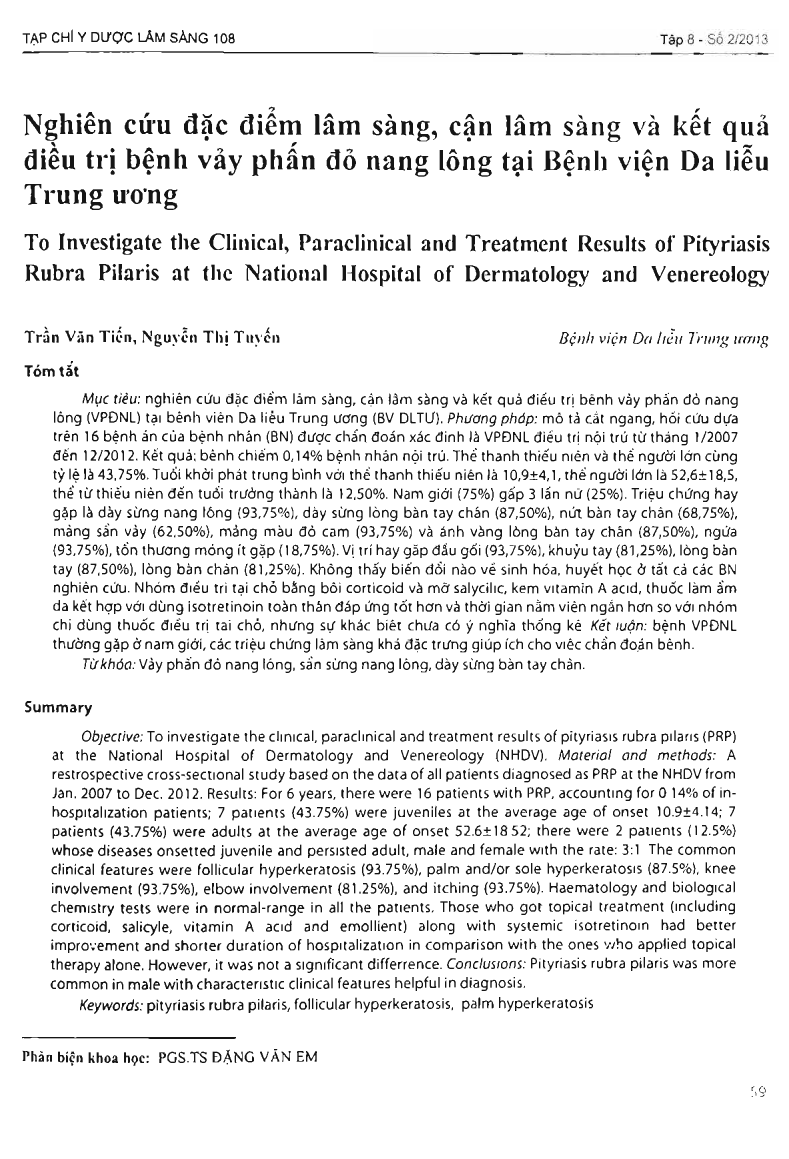
Objective: To investigate the clinical, paraclinical and treatment results of pityriasis rubrapilaris (PRP) at the National Hospital of Dermatology and Venereology (NHDV). Material and methods: A restrospective cross-sectional study based on the data of all patients diagnosed as PRP at the NHDV from Jan. 2007 to Dee. 2012. Results: For 6 years, there were 16 patients with PRP, accounting for 0.14 percent of inhospitalization patients; 7 patients (43.75 percent ) were juveniles at the average age of onset 10.9 + or - 4.14; 7 patients (43.75 percent ) were adults at the average age of onset 52.6 + or - 18.52; there were 2 patients (12.5 percent ) whose diseases onsetted juvenile and persisted adult, male and female with the rate: 3:1. The common clinical features were follicular hyperkeratosis (93.75 percent ), palm and/or sole hyperkeratosis (87.5 percent ), knee involvement (93.75 percent ), elbow involvement (81.25 percent ), and itching (93.75 percent ). Haematology and biological chemistry tests were in normal-range in all the patients. Those who got topical treatment (including corticoid, salicyle, vitamin A acid and emollient) along with systemic isotretinoin had better improvement and shorter duration of hospitalization in comparison with the ones who applied topical therapy alone. However, it was not a significant differrence. Conclusions: Pityriasis rubra pilaris was more common in male with characteristic clinical features helpful in diagnosis.
- Đăng nhập để gửi ý kiến
